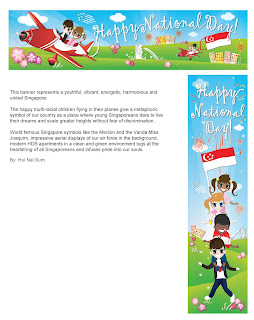By Shibani Mahtani

- Reuters
- Yachts berthed at the One Degree 15 Marina Club on Sentosa Island in Singapore.
SINGAPORE – The latest list of wealthy Singaporeans from Forbes magazine showed lots of money sloshing around Singapore – but it may just be the tip of the iceberg.
The magazine’s
latest annual ranking of the city-state’s wealthiest 40 individuals found that Singapore’s richest people have a collective net worth of US$59.4 billion, up from $54.4 billion last year, with 16 billionaires locally compared to 13 last year. But separate estimates from
Wealth-X, a group which provides intelligence on the world’s high net worth individuals, suggests that there may be at least 10 others in Singapore worth over US$280 million who might have been left out of the list. ($280 million was the worth of the 40
th-ranked Singaporean this year, Ho Kwon Ping of Banyan Tree Resorts).
Boston Consulting Group, meanwhile, has said Singapore has the highest percentage of millionaire households in the world, suggesting there are lots of other big fish who have tons of money but just not quite enough to make Forbes’s roster.
The Forbes list of Singapore’s 40 richest did not include Goh Cheng Liang, who founded Nippon Paint (Singapore), a regional distributor of the Japanese paint manufacturer. Mr. Goh, who also founded Wuthelam Holdings – a private conglomerate with investments in retail, manufacturing, construction and property – is also a philanthropist, and is worth an estimated US$1.2 billion according to Wealth-X.
The list also left out Frank Tsao Wen King, the founder of International Maritime Companies (IMC) Group, which was started in Hong Kong but moved to Singapore in the early 1990s. Mr. Tsao is currently the senior chairman of the company and a shareholder of the Suntec Real Estate Investment Trust. According to Wealth-X estimates, Mr. Tsao is worth US$820 million – which would place him in the 21st spot on Forbes’ list.
Calculating individuals’ wealth is often difficult and frequently subject to debate. Individuals don’t always make it easy for researchers to identify all their assets or sources of income, and complex family relationships can make it even harder to parse out who controls what. Since fortunes are often based in part on stock holdings or other assets whose values move up and down over time, a person’s net wealth can change dramatically depending on when the research into their holdings is completed.
Forbes said its list was compiled using shareholding and financial information obtained from the families and individuals as well as stock exchanges, analysts and regulatory bodies in Singapore. The fortunes were calculated based on stock prices and exchange rates as of July 13, while private companies were valued based on similar companies that are publicly traded.
Wealth-X said it tracks a wide variety of metrics including equity stakes, cash salaries, and assets such as real estate, planes, and art.
Various consultancies, private wealth managers and other observers have noted that wealth in the city-state has steadily been expanding over the years, as the world’s wealthy individuals are tempted to place more assets in the country – or move there entirely – thanks to
Singapore’s low tax rates and comfortable living environment. Among the most famous is Facebook co-founder Eduardo Saverin, who made his debut on the Forbes list this year at #8 after he recently
renounced his U.S. citizenship in favor of long-term residence in the city-state.
Ten of every 100,000 households in Singapore are now classified as “ultra-high-net-worth” households, meaning they each have more than US$100 million in private financial wealth, according to BCG. This number is just shy of the comparable metric in Switzerland, which has the highest concentration of ultra-high-net-worth households at 11 for every 100,000, and above Hong Kong, which has seven of these for every 100,000 households.
Flashy displays of wealth – particularly on the part of foreigners – have also
created a tense atmosphere at times in the city-state, with some locals feeling disgruntled that more wealthy foreigners are now residing in the city state, and possibly helping push other costs higher as they spend more.
Earlier this year, Singapore
ended a program that allowed wealthy foreigners to get permanent residency as long as they kept S$10 million (US$7.9 million) in assets in the country for five years. The move was also designed to cool the property market, whose price increases have been driven in part by foreign investment, irking Singaporeans and undercutting support for the ruling People’s Action Party.
Besides Mr. Saverin, Forbes’ list of the 40th wealthiest Singaporeans also features several other new entries, including Raj Kumar and his son, Kishin RK, who are behind the privately-held property empire Royal Holdings and RB Capital. Listed at number 11th on the list and worth $1.5 billion, they are among Singapore’s eight new billionaires making their debut on the 2012 list.
Remaining on the top of Forbes’ list after being #1 last year is the Ng family – specifically, Robert and Peter Ng – who run Far East Organization, which was founded by their father who died in 2010. The group boasts annual revenues of $5.5 billion, and is behind hundreds of properties, including hotels and malls, in Singapore and Hong Kong.










































